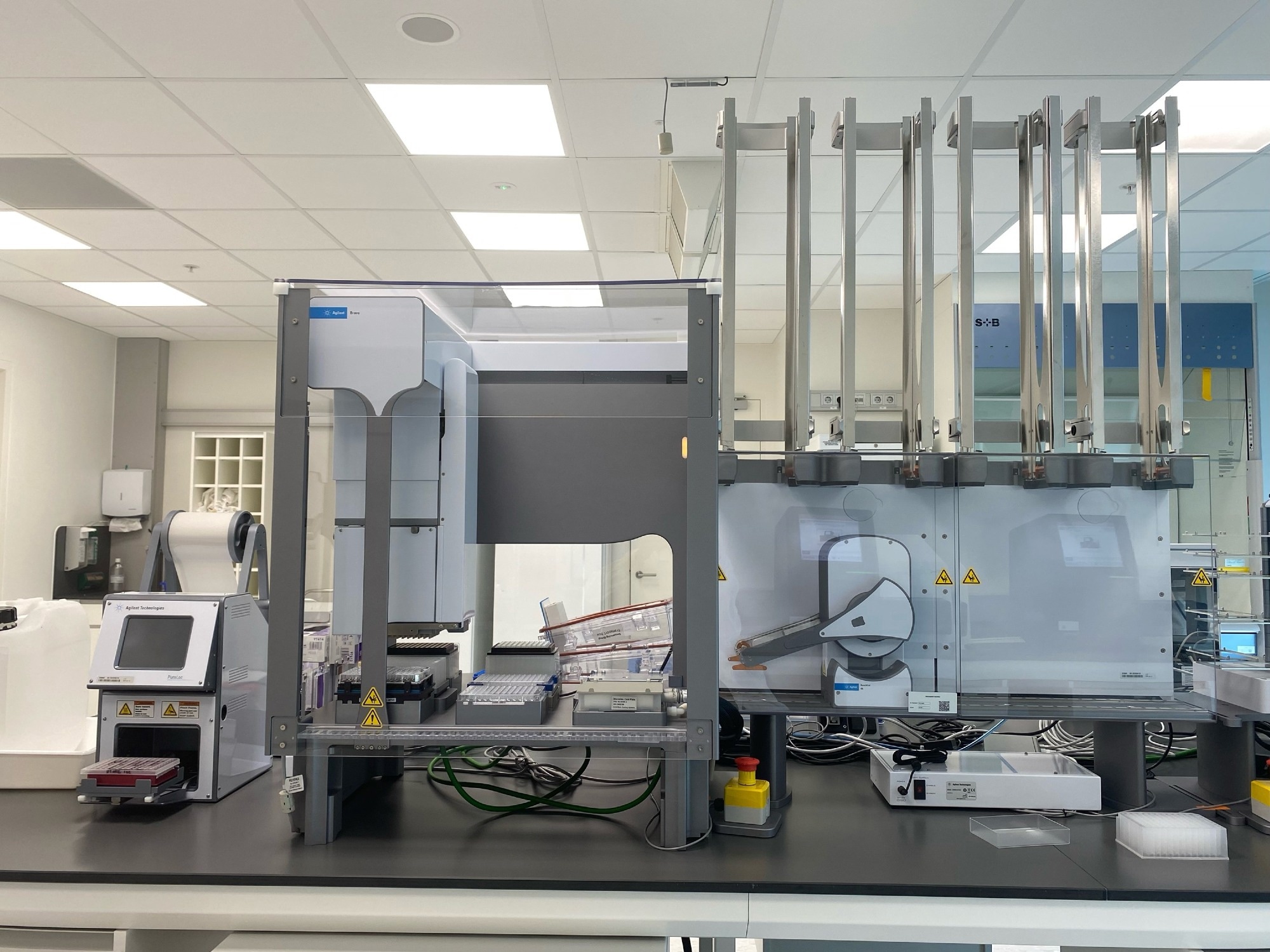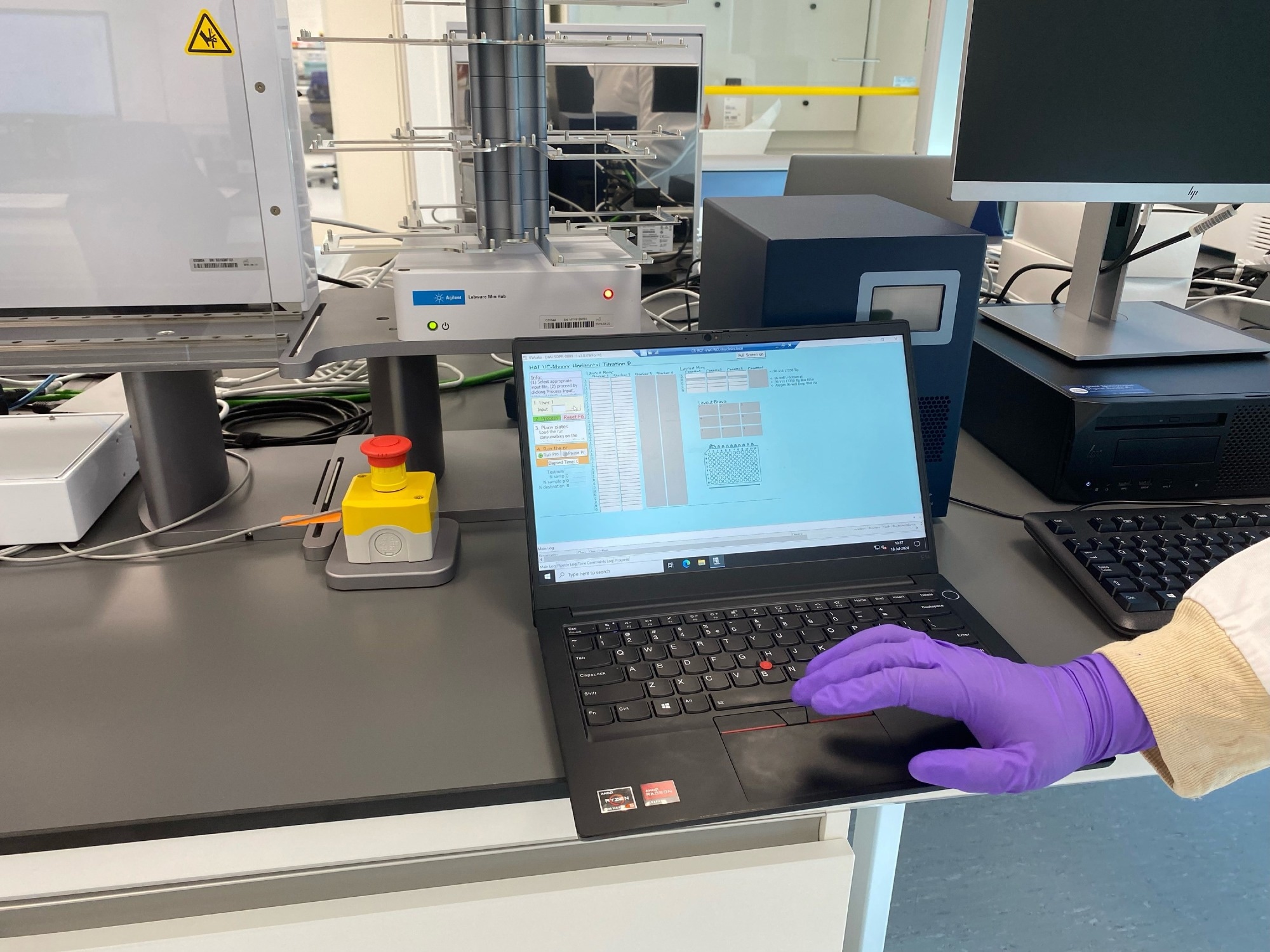Sponsored Content by Cerba ResearchReviewed by Louis CastelSep 25 2024
In this interview, NewsMedical talks to Cerba Research’s Coen Stalpers about advances in automation and artificial intelligence in the laboratory setting.
Can you describe the role artificial intelligence (AI) currently plays in your laboratory operations?
Typically, we aim to automate processes to improve inefficiencies and quality. Often, the conceptual nature of these tasks makes it difficult to determine where to start. In such cases, I frequently use AI, specifically ChatGPT, to generate a starting point by prompting questions like, "How would you do this?" or "How would you do that?" This process helps to organize my thoughts into a tree of ideas, adding branches and leaves that then require continuous prompting and refining. At the very least, we can clarify objectives and identify appropriate tools through AI.
A concrete example is a machine that outputs data, which we need to integrate into an analysis workflow. If the method is unclear, AI can provide examples and suggestions.
While it is essential to critically evaluate these AI-generated suggestions, it offers a useful shortcut for conceptualizing projects. For instance, a machine from our lab reads samples and generates 100 numbers at a time, which previously required manual copying and pasting. A simple script now accomplishes in one minute what used to take four hours.
This approach enables us to develop proposals that, while not perfect, are at an acceptable level to present to decision-makers. Once a basic concept is established, it can be refined and professionalized, making it more streamlined and appealing.
How did you identify which laboratory processes would benefit most from AI integration?
Currently, we are exploring how AI can enhance our processes. For instance, I analyze various aspects to achieve specific goals.
However, a potential benefit of AI in the future is in our image analysis area, where we create hundreds of images and analyze them by scoring spots on each picture. This process involves distinguishing between background and foreground and can be automated using AI instead of relying on human input. While the exact method is undefined at this stage, AI can guide me on how to approach it.

Image Credit: Cerba Research
What were the biggest challenges you faced during the implementation of AI technologies?
The biggest challenge lies in differentiating useful information from misleading content. As a language model, ChatGPT scans the web and makes educated guesses based on the input it receives. However, the internet contains a great deal of unreliable information. Therefore, it's important to understand that initial responses are likely to provide direction rather than complete accuracy.
To navigate this, it is often necessary to reformulate questions multiple times, identify elements that appear inaccurate, and seek further clarification. This iterative process helps refine the information and ensures we stay on track despite the inherent challenges.
In what ways has AI improved the efficiency of laboratory processes?
By using AI to guide and achieve these improvements, individual and team efficiency can be dramatically increased. Standardizing processes with AI ensures consistency, enhancing both productivity and quality. This leads to reliable, high-quality outputs, reflecting the benefits of integrating AI into daily operations.
AI is great when it comes to repetitive tasks. Instead of performing the same task multiple times an hour, AI can suggest ways to reduce the frequency. In laboratory settings, where fixed procedures are common, AI can identify which parts of these processes can be automated.
How has AI impacted the turnaround time for projects or experiments?
The main impact is turnaround time, from starting wet work in the lab to reporting. Currently, this process can take up to four weeks.
By leveraging AI to build automated workflows, we can reduce hours to minutes or days to hours. This shift mirrors the transition from traditional Googling, where everything is done manually, to using AI, which quickly provides broader, contextualized information.
For example, as a lab technician who was still handling wet work three years ago, it was standard procedure to fit raw data into an analysis template after each experiment. This task typically required three to four hours of daily work for each analysis. This task was a significant bottleneck and extremely tedious.
I have since managed to streamline this process to just two minutes and three clicks by automating it, significantly reducing the need for manual review. The system now processes and funnels the data into the workflow, displaying a progress bar that cuts timelines from hours to minutes.
The time savings are substantial. Each technician can now complete four to six analyses daily, and with a team of 10 technicians, the efficiency gains are significant. This automation, powered by AI, has been key in optimizing the workflow.

Image Credit: Cerba Research
How does AI assist in data collection and analysis in your laboratory?
AI may not be fully utilized yet, but its future potential is considerable. For instance, AI could conduct comprehensive meta-analyses on data collected over a year, uncovering trends that might be missed by human analysis in a busy laboratory setting. Although we have trend systems in place, pinpointing the root cause of subtle or significant trends in assay data can be challenging.
Although our current data organization may not easily support this, AI has the potential to function like a thousand data analysts in one. It can process and interpret vast amounts of information, uncovering patterns and correlations that might not be immediately obvious. This capability would allow laboratories to review trends and insights more efficiently, leading to more informed decisions and accelerated advancements.
How do you ensure that AI systems comply with industry regulations and standards?
Automating a process necessitates standardizing and precisely defining quality criteria and specifications. This helps identify and address discrepancies in task execution among different individuals, ensuring that all processes adhere to consistent quality standards.
It is important to reduce unwanted variability in assays that can lead to quality issues. At Cerba Research, we implement validation strategies to address this and ensure that the automated process produces the expected results. This includes testing with extreme data to confirm the system's robustness.
When building and validating automated systems, our goal is to ensure they produce reliable results under normal, intended use. We also account for potential issues, such as filtering out or flagging anomalies. Continuous monitoring and root cause analysis of unexpected results allow us to make necessary adjustments and maintain system accuracy and reliability.
Our validation department plays a crucial role in this process, contributing valuable insights to ensure the system's reliability and consistency.
Video Credit: Cerba Research
Can AI help predict and prevent potential compliance issues? If so, how?
By automating and standardizing processes and setting clear specifications for system operation, we can ensure that any deviation from these standards is immediately flagged. An automated system consistently alerts us when it falls outside the defined parameters, reducing the risk of errors due to human distraction or oversight.
What future AI advancements are you most excited about for laboratory applications?
I am particularly excited about the potential to analyze long-term trends in our assay data. Currently, we track trends and identify potential correlations within our data. However, feeding multiple years, or even a decade's worth of data, into an AI system—without the need for manual categorization or cleaning—could reveal hidden patterns and provide new, valuable insights.
The ability to identify such patterns could lead to significant improvements in assay control. For instance, we could predict long-term effects based on specific actions, enabling us to optimize our processes. Given the vast amount of data, this analysis is highly feasible.
How do you balance using AI with the need for human expertise and oversight?
Leveraging AI to identify patterns and connections that would otherwise be imperceptible is essential. However, human oversight is crucial as AI-generated outputs can be inaccurate. When developing new applications with AI, it is necessary to thoroughly understand the AI-derived components.
Domain experts can effectively utilize AI to rapidly generate field-specific content. They can readily assess this output and identify relevant insights. Unsupervised AI can generate dashboards to highlight anomalies. Human intervention is then required to interpret these anomalies, determine their significance, and adjust parameters accordingly. Alternatively, such anomalies may reveal previously unknown patterns. Ultimately, a collaborative human-AI approach is necessary.

Image Credit: NicoElNino/Shutterstock.com
How do you handle client data privacy and security in AI-driven processes?
Each sample is assigned a unique number and a key links this number to the corresponding patient. Therefore, strict vigilance is essential to ensure the proper handling of this data. Our current procedures are designed to uphold high standards to maintain data integrity and security.
How do you measure the return on investment (ROI) for AI implementations in the lab?
We have achieved significant automation with AI. A clear example is piping data from point A to B, where processing time is reduced from hours to minutes. By determining the frequency of this process—four times per working day or 20 times per week—we can calculate substantial time savings. This represents a single assay, and considering all assays, the return on investment becomes even more apparent.
Integrating robots into the laboratory presents a different scenario. While the initial investment in equipment is substantial—often reaching millions of euros—the long-term benefits are significant. Operator hands-on time is reduced to approximately ten minutes, with the robot handling most of the work. Additionally, the robot greatly minimizes the use of consumables, such as plastics or reagents. For example, we recently developed a new pipetting protocol on a robotic platform that requires only four boxes of pipette tips instead of 40 pipette tip boxes when performing the same manually, representing a tenfold reduction in consumable usage.
What performance metrics do you use to evaluate the success of AI applications?
The time saved through automation is often the primary metric for assessing performance, but quality levels are also crucial to consider. While not always the main focus, automation and AI can also enhance throughput.
From a broader perspective, automation frees operators to focus on other important initiatives. With routine tasks such as material transfer, titration of 200 samples, and manual data entry handled by automated systems, individuals can dedicate their efforts to maintaining a clean laboratory environment or implementing agile or Six Sigma methodologies. This shift allows them to prioritize improvements and innovations rather than being bogged down by repetitive tasks.
Can you share any quantitative or qualitative results that highlight the impact of AI on your laboratory operations?
Our automated processes keep a log of work volume, enabling us to quantify data transfer from point A to point B. For standardization purposes, reducing data content transfer is roughly equivalent to three to four hours of work for a single individual. By tracking this activity, which occurs approximately four times daily, we can calculate a time savings of about 16 hours. This represents a significant reduction in time without compromising the quality of the results.
Additionally, the robot can perform titrations, a task that was previously labor-intensive. Although industry results are still pending, we have high confidence in the robot's accuracy. By conducting titrations before the workday or even over the weekend, the team can start their day focusing on experimental work. Parallel processing, where a new titration begins while analyzing results from the previous batch, effectively doubles throughput. This approach allows the team to double the assay output without increasing personnel.
The value of AI and automation is evident, but realizing this potential requires time to explore the concept and invest resources. It is important to take a measured approach, ensuring that the transition from human processes to automation is yielding the anticipated benefits and desired outcomes.
About the speaker

Coen Stalpers is an Automation Specialist at Cerba Research with a background in medical biotechnology. With a master's degree in this field, Stalpers has gained experience through roles in academia, government, and regulatory quality assurance. Stalpers enjoys solving problems and finding simple solutions to seemingly complex issues. Valuing interdepartmental collaboration, Stalpers has a great interest in computer programming, which is used to automate repetitive tasks and improve efficiency. Within Cerba Research, he is always on the lookout for ways to improve efficiency by automating processes.
About Cerba Research
Cerba Research is a leading specialty laboratory services provider with the capacity and breadth of a global central laboratory network. Their highly qualified scientists provide insight on the latest biomarkers, assays and testing approaches and develop innovative solutions for unique challenges across all research phases, to pharmaceutical, biotechnology, medical device, government, and public health organizations.
Cerba Research’s extensive capability in laboratory testing and logistics including; Bioanalysis, Flow Cytometry, Histo/Antao Pathology, enables them to drive operational agility at scale in a wide range of therapeutic areas, with recognized expertise in Virology, Immunology, Oncology and Cell & Gene Therapy. Cerba Research is part of the Cerba HealthCare Group with 15,000 employees on five continents, driven to advance diagnosis and health.
For more information about Cerba Research, please visit cerbaresearch.com.